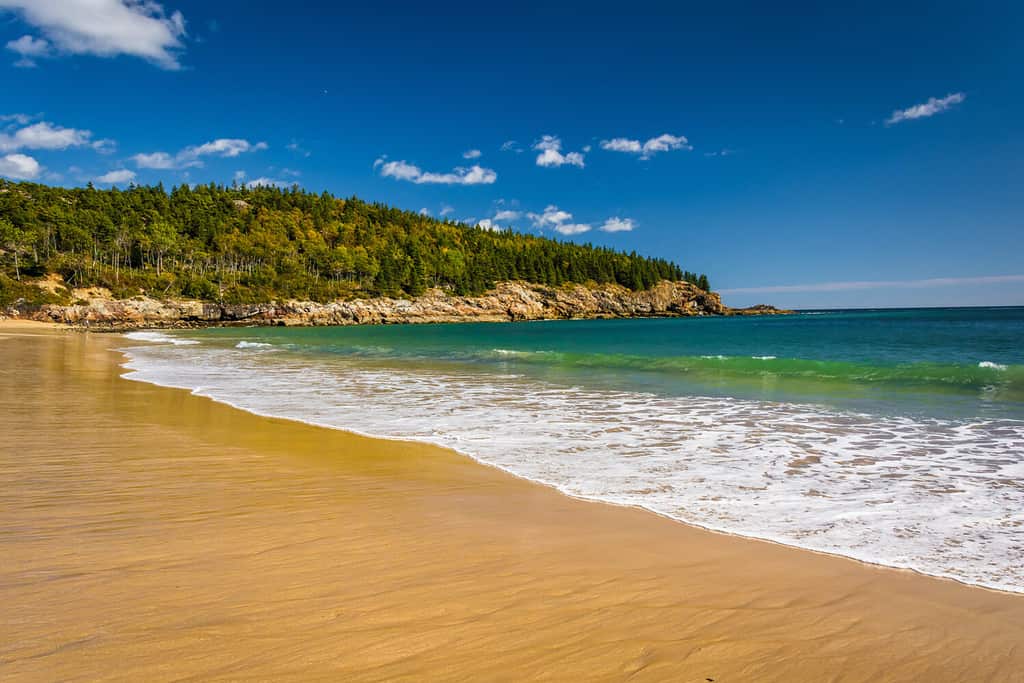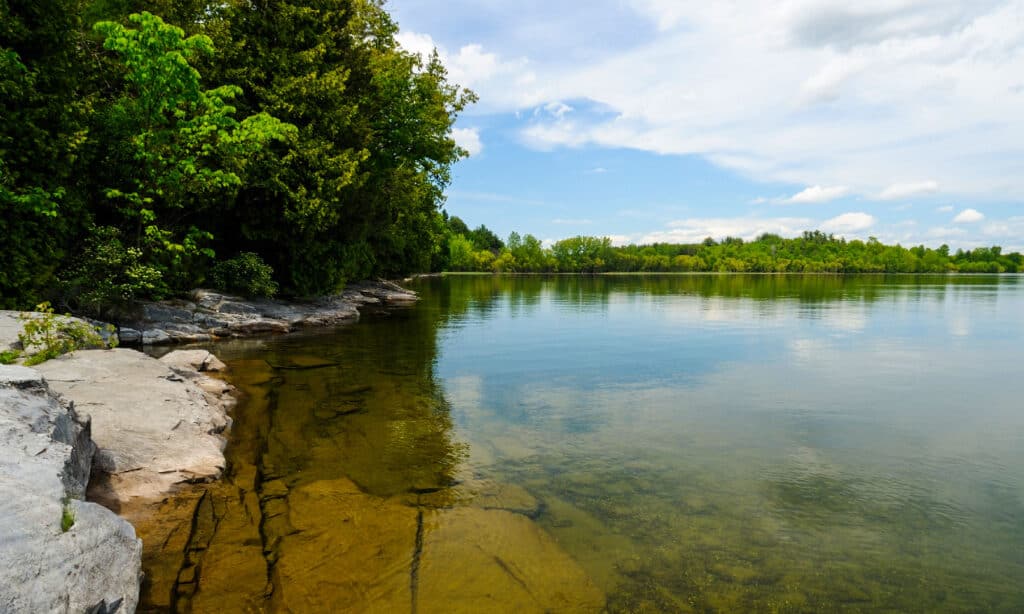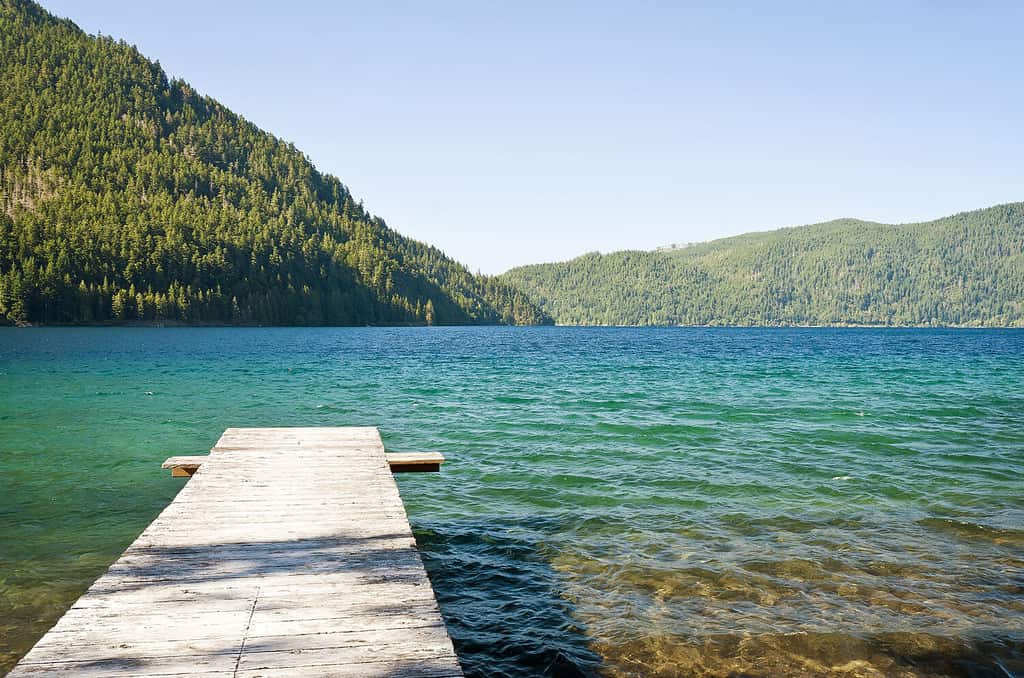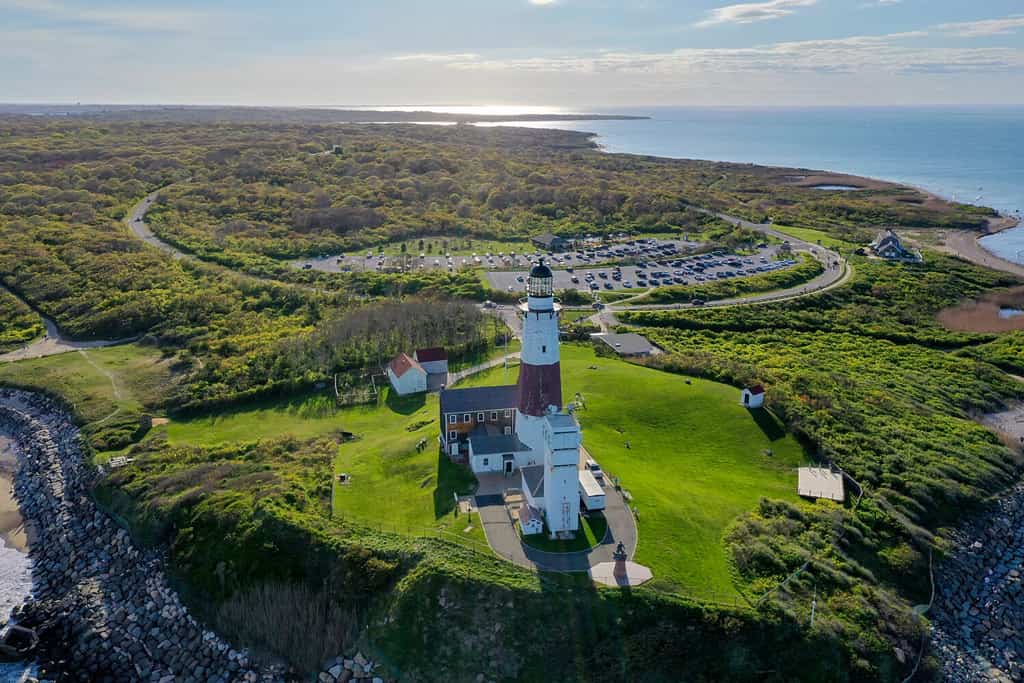July is the warmest month of the year in the United States. The warmest day of the year in the U.S. typically occurs around July 26, according to meteorologist Shane Brown. When the summer heat peaks, many Americans head to a swimming pool, sit under a shade tree, or maybe just stay inside with the air conditioning cranked up. But there are places where the July heat isn’t so bad. Some folks might even think the July weather in a few of these locations is downright chilly. Data from Extreme Weather Watch reveals six U.S. states that feature average July high temperatures below 80°F. If the summer heat and humidity have you sweating bullets, a trip to one of these states might be in order.
1. Alaska
Not surprisingly, Alaska is the coldest U.S. state in July. As the northernmost state in the nation, it is also the coldest state year-round.
Alaska’s average high temperature in July is 62.3°F. The coldest July on record in Anchorage, the largest city in Alaska, was in 1971. The city saw an average high temperature of just 55.4°F that month, which is about ten degrees cooler than the city’s average high temperature in July.
Summer cruises and trips to Alaska are quite popular, partly because of the delightfully cool temperatures compared to many locations in the Lower 48. More than 52,000 Alaskans depend on this tourism for their livelihoods.

Alaska’s cool summer temperatures are moose-approved.
©BILD LLC/Shutterstock.com
Coldest Temperature Ever in Alaska
While July features some refreshingly cool temperatures in Alaska, January is a bit more, shall we say, chilly. The coldest temperature ever recorded in the state was on January 23, 1971, when Prospect Creek dipped to -79.8°F. That also marks the coldest temperature ever documented in the United States. As noted above, 1971 was also the year of the coldest July on record in Anchorage.
Alaska’s Size and Population
Alaska is the largest state by area in the U.S. by a wide margin. At 665,384 square miles, it is bigger than the next three largest states (Texas, California, and Montana) combined. However, despite its large size, Alaska is the third least populated state, behind Wyoming and Vermont. The state is home to 733,500 people. Given its large size, Alaska is the least densely populated state in the nation. Population density measures the number of people per square mile.
Wildlife in Alaska
Alaska features the largest untamed wilderness in the United States. It is also home to eight national parks, the second most of any state (California has nine). The largest national park in the nation is Alaska’s Wrangell-St. Elias National Park. At 13.2 million acres, this park is six times larger than Yellowstone National Park. In fact, seven of the top ten largest national parks are located in Alaska.
Animals such as moose (the official state land mammal of Alaska), bears, wolves, caribou, and many others roam throughout the state. Bowhead whales (Alaska’s official marine mammal), humpback whales, orcas, and gray whales can be found along the coast.
2. Maine
The coldest state in the Lower 48 in July is Maine, with an average July high temperature of 77.2°F.
Maine features three climatological divisions: the Coastal, Southern Interior, and Northern Interior divisions. The Coastal division is the most temperate of the three, with cooler summers and warmer winters. The Northern Interior has the highest elevations, keeping it cooler than the Southern Interior. July temperatures can sometimes reach 90°F in the interior regions, especially in the Southern Interior.

Even in the middle of summer, going for a swim in Maine can sometimes be a bit chilly.
©Jon Bilous/Shutterstock.com
Coldest Temperature Ever Recorded in Maine
Maine’s coldest temperature on record was documented in Big Black River, near the border with Quebec. On January 16, 2009, the temperature dropped to -50°F.
Maine’s Size and Population
At 35,379 square miles, Maine is the 12th smallest state in the U.S. It is the ninth least populous state with 1,385,340 residents.
Wildlife in Maine
Maine is home to some remarkable wild regions, including the North Woods, which is nearly twice the size of Massachusetts. The state is also home to Acadia National Park.
Like Alaska, the moose is also the state animal of Maine. The state boasts the largest moose and black bear populations in the Lower 48. The elusive Canada lynx stalks remote areas of the state. Beavers and white-tailed deer are common sights in Maine.
3. Vermont
With an average high temperature of 78°F, Vermont is the third coldest state in July.
Weather in Vermont can change rapidly. The state is subject to the cold, dry air from the North American subarctic, the moist, warm air from subtropical waters, and the damp, cool air from the North Atlantic Ocean. This makes it difficult to declare an average temperature for the state since conditions can vary depending on the source of the airflow on any given day.

Summers in Vermont are simply lovely but chilly.
©Rob Rudeski/Shutterstock.com
Coldest Temperature Ever Recorded in Vermont
The coldest Vermont temperature on record occurred on December 30, 1933. The small town of Bloomfield in Essex County dipped to -50°F.
Vermont’s Size and Population
Vermont is the sixth smallest state by area, measuring 9,616 square miles. It is the largest of the six states, with areas under 10,000 square miles.
With a population of just over 647,000, Vermont is the second least populous state in the U.S. Only Wyoming has a smaller population at 581,381.
Wildlife in Vermont
Around 78% of Vermont’s land is forested, giving wildlife plenty of space to roam. Moose, black bears, foxes, and bobcats all populate Vermont’s wooded regions. The state is also home to many bird species. The annual Christmas Bird Count documents the many birds that live in or migrate through Vermont. Some of the most common birds include Canada geese, rock pigeons, mourning doves, black-capped chickadees, European starlings, and house sparrows.
4. Washington
Washington checks in at number four of the coldest states in July. The state sees an average July high temperature of 78.7°F.
The coldest city in Washington during July is also the state’s largest city. Seattle averages 72°F in July. The warmest major city in the state is Spokane, with an average July high temperature of 84°F.
Washington’s weather is much more well-known for its precipitation than its heat, although that is a bit of a misrepresentation. Washington doesn’t even crack the top ten rainiest states in the nation. Seattle receives less rain than Boston, New York, Houston, and Miami each year.

Washingtonians enjoy many lovely summer days each year. And no, it doesn’t rain all the time.
©tusharkoley/Shutterstock.com
Coldest Temperature Ever Recorded in Washington
The coldest temperature ever recorded in Washington state was December 30, 1968, when the mercury dropped to -48°F at Mazama and Winthrop.
Washington’s Size and Population
Washington ranks eighteenth out of the 50 U.S. states in terms of land area. The state measures 71,298 square miles.
It is the thirteenth most populous station in the nation, with 7,785,786 residents.
Wildlife in Washington
Washington is home to three national parks: Mount Rainier, Olympic, and North Cascades national parks. Its location in the Pacific Northwest makes Washington the perfect home for a wide array of animals. The Olympic marmot is endemic to Washington and is one of the state’s official animals. The state is also home to fisher cats, minks, moose, beavers, river otters, and many more animals.
5. New Hampshire
With an average high temperature of 79.1°F, New Hampshire is the fifth coldest state in July.
New Hampshire is a great place to experience the four distinct seasons. Winters are cold and snowy. Spring and fall are seasonably cool. Summers are warm enough to swim in a lake, or the Atlantic Ocean, but the heat is rarely oppressive.
The weather is not delightful everywhere in the Granite State, though. One location is known to feature the worst weather in the world. The weather on Mount Washington changes rapidly and can feature deadly extremes. A wind gust of 231 mph was recorded on Mount Washington in 1934. It is the highest documented wind gust outside of a tornado or tropical cyclone ever recorded.

A beach day in New Hampshire means enjoying the sun without the summer extremes.
©Wangkun Jia/Shutterstock.com
Coldest Temperature Ever Recorded in New Hampshire
On January 22, 1885, the temperature on Mount Washington dropped to -50°F, the coldest air temperature ever recorded in New Hampshire.
Much more recently, the temperature on Mount Washington dropped to -46°F on February 3, 2023. The wind gusted to 127 mph, which sent the wind chill down to an unfathomable -108°F. It is the lowest windchill ever documented in history. The U.S. has experienced three wind chill events below -100°F, and all three have occurred on Mount Washington.
New Hampshire’s Size and Population
At 9,349 square miles, New Hampshire is the fifth-smallest state by area. It is the tenth-smallest state by population, with 1,395,231 people calling the Granite State home.
Wildlife in New Hampshire
The white-tailed deer is the state animal of New Hampshire. Along with a healthy deer population, the state also features bobcats, martens, wild turkeys, coyotes, moose, black bears, and many more animals.
6. New York
New York is the southernmost state with a July average temperature under 80°F. In fact, it averages 79.7°F during the month.
The average July high temperature in New York City is 84°F. Buffalo is the coolest of the state’s major cities, with a July average high temperature of 79°F. Rochester averages close to 82°F in July, while Yonkers averages around 85°F, and Syracuse typically sees highs around 81°F.
While parts of the Empire State can certainly warm up in mid-summer, the higher elevations of the Adirondack and Catskill mountains help bring down the state’s overall monthly average temperature.

Summer brings some spectacular weather to New York.
©Felix Lipov/Shutterstock.com
Coldest Temperature Ever Recorded in New York
The coldest temperature ever documented in New York State was February 18, 1979. Old Forge recorded a temperature of -52°F.
New York’s Size and Population
New York is the 27th largest state in terms of area, measuring 54,555 square miles.
However, while the state is in the middle of the pack in terms of area, it is near the top when it comes to population. With 19,677,151 residents, New York is the fourth most populous state in the nation, trailing California, Texas, and Florida.
Wildlife in New York
The beaver is the official New York state mammal. Other animals that are found throughout the state include the white-tailed deer, gray fox, red fox, mink, muskrat, black bear, and many more.
The photo featured at the top of this post is © Christopher Koshak Photos/Shutterstock.com
Thank you for reading! Have some feedback for us? Contact the AZ Animals editorial team.







